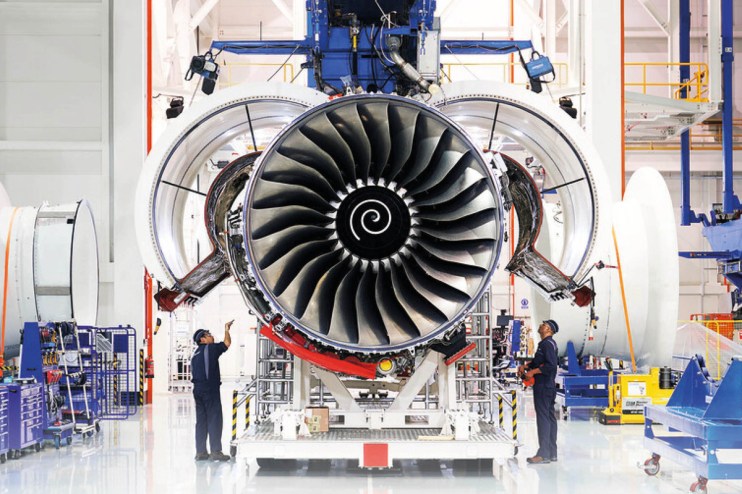| Updated:

Rolls-Royce, the British icon which has become a darling of the FTSE 100 post-pandemic, is showing no signs of disappointing investors as its market capitalisation passed the £70bn mark for the first time in its history.
The milestone means that long-term investors are also guaranteed a huge return if they ever decided to sell, but also a sizeable pay day after Rolls-Royce recently reinstated its dividend.
The group’s remarkable recovery from the lows of the Covid-19 pandemic have made it one of the best performing stocks on the London Stock Exchange in recent years.
Its share price’s continual rise has sparked much speculation about how long the moment can be kept up and whether the stock will reach its peak sometime soon.
But its performance has persisted to defy expectations of City analysts and investors alike.
City AM reported in January this year that Panmure Liberum analyst Nick Cunningham had argued that Rolls-Royce’s shares could still increase by more than 40 per cent over the next three years to 820p – a total which was surpassed this week.
By the start of 2025, Rolls-Royce’s share price had risen six-fold over the preceding two years and was the best performer in the FTSE 100 in 2024
But while Rolls-Royce has achieved this latest milestone, the big question is – what’s next?
Rolls-Royce’s profit
In February, Rolls-Royce announced that its revenue increased from £16.4m to £18.9bn in 2024 while its operating profit also rose from £1.9bn to £2.9bn.
Earlier this month, the FTSE 100 giant updated the market again and said it is confident it will hit an underlying profit of nearly £3bn in 2025.
Russ Mould, investment director at AJ Bell, said: “Rolls-Royce has every chance of making the most of a strong competitive position in its primary marketplace.
“Although the jet-engines market is not quite a duopoly, GE and Rolls-Royce dominate and this leaves them well placed to provide new engines to a growing market and also generate long-term, high-margin service revenues.
“Neither Warren East, nor his successor as the company’s chief executive, Tufan Erginbilgic, thought the company was making enough of this strong position, and they have done much to improve operational performance.
“As a result, Rolls-Royce has shown huge advances in its financial performance, as it has capitalised upon the recovery in air travel and the increase in passenger numbers post-pandemic.
“Long-term growth in air travel, engine deliveries and service revenues look potentially solid and the company also offers exposure to the defence sector and also nuclear power, through its small modular reactors.
“Nuclear could yet prove itself to be part of the solution to the ever-growing demand for energy and particularly energy sources that help governments and utilities meet the carbon emission targets.
What Rolls’ share price means for the FTSE 100
Mould also touched on the importance of Rolls-Royce’s market capitalisation for investors as well as the wider FTSE 100 as a whole.
He said: “The company has reinstated its dividends, started buying back shares and reached its free cash flow target of £2.7bn to £2.9bn two years early.
“In this respect, the story is now well-known, especially as the share price has rocketed to multi-year highs.
“This is where valuation comes in, since the price, or multiple, paid to access a share of a company’s assets and profit and cash flow streams is the ultimate arbiter of investment return.
“Investors must now decide whether paying around 25 times for 2027 consensus analysts’ forecasts earnings of 31.4p a share offers sufficient upside and, alongside dividends and buybacks, to compensate for the risks that remain – such as economic slowdown that hits near-term air travel patterns, delays in the roll-out of SMRs, or simply wider stock market turbulence.
“That price tag is a huge premium to the FTSE 100, although it is possible that Rolls-Royce will continue to exceed forecasts, with the result that the actual multiple is lower than it looks.”










